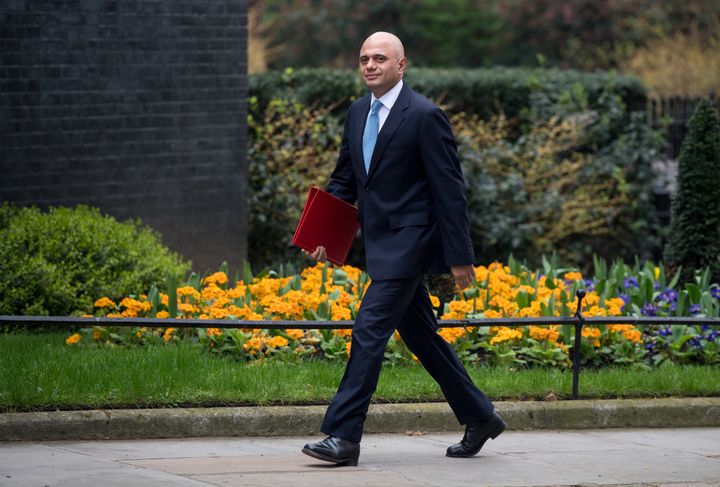
A “bankrupt” Tory authority used a £9m fund meant for school improvements in a failed attempt to fill a growing financial black hole, it can be revealed.
Cash-strapped Northamptonshire County Council spent the money to “mitigate” losses in an account used for general everyday spending in 2016, HuffPost UK has found.
The authority has been hit by one of the worst council cash crises in decades, after central government cuts coincided with surging demand for services.
The situation has prompted fears that Northants could become the first of a number of county councils to “fail” as financial pressures mount.
The £9m schools’ funding was meant to be set aside to pay for “future educational improvements within the county”.
It came from a so-called Section 106 (S106) obligation, which are placed on property firms to ensure new developments benefit the whole community.
But an independent review into Northamptonshire’s finances by government inspector Max Caller revealed the “one-off” payment of S106 money was transferred to the council’s general revenue account during the year 2016-17.
Auditors KPMG confirmed in an August 2017 report that the £9m came from funds meant for education improvements and that it was intended to be replaced “through council borrowing”.
County council officials this week declined to elaborate or provide further details.

Northants schools were the subject of a damning open letter from an Ofsted chief in 2016, who described overall education in the county as “poor”.
The authority has since burned through the S106 cash, with its replacement thrown into doubt after the council was effectively deemed “bankrupt” last month and as plans to split the authority into two gain support.
Numerous council-run services are being slashed by up to £40m this year as it battles to stay financially afloat.
Caller also found at least £4.5m of S106 money was estimated to be used in a similar way during the 2017-18 financial year.
Cash from S106 obligations is often earmarked for new schools, libraries, road, as well as pavements, street furniture and playgrounds.
The review states that no payments from S106 money into the revenue account were made in the three years before 2016, though the council said it first raised concerns over gaps in its budget in 2014.
Local authority revenue accounts are used for day-to-day spending, such as providing care to vulnerable adults, and are separate to capital accounts which fund big expenses, such as new schools and roads.
In his review, Caller suggested creative accounting methods “masked” the true extent of Northamptonshire’s use of “one-off” payments to make up losses.
And he said there was evidence that backbench councillors were too afraid to ask questions during financial audit meetings for fear of being “replaced”.
Planning experts have now raised concerns over S106 payments being used to fund normal outgoings without developers and the public being fully aware.

Prof. Peter Rees, former chief planner for the City of London, said: “If a local authority were to use Section 106 money to support everyday spending without it being in agreement with a developer, it would be incorrect. It could well be a misuse of those funds.
“It was never meant to be money that would be put into a council budget, but rather it was intended to ensure that whole communities benefited from a development.”
The revelations also suggest the crisis-hit council risks contradicting its own policy on the use of developer cash.
“It could well be a misuse of those funds.”
- Prof. Peter Rees, former City of London chief planner
Northamptonshire Council’s latest annual review states that S106 funding should “contribute to supporting the cost of investment in infrastructure to ensure future provision of key service[s] on which the population relies.”
The council held a S106 fund worth a total of £30.1m on 1st April last year, HuffPost found through a Freedom of Information request.
It received over £18m in S106 cash in 2016-17, according to public records, with spent £5m on “education” last year, including support for the construction of Radstone Fields Primary School near Brackley.
The legal basis for the use of S106 money for everyday spending, even with a pledge to replace it later on, is uncertain.

Leeds City Council was forced to defend the tactic last year when The Yorkshire Post revealed that multiple councils were holding on to more than £20m of S106 money, failing to spend it on community projects, and then using it to boost day-to-day budgets.
Northamptonshire County Council wouldn’t confirm which property developers, or which developments, were linked to the S106 cash used to “mitigate” losses.
The authority, led by a Conservative majority, has been plunged into uncertainty amid mounting pressure over huge gaps in its budget.
Officials have warned adult care services risk being “unsafe” amid the financial turmoil while campaigners slam a “firesale” of council assets, including 21 libraries and its brand-new £53m central Northampton HQ.
The council became the first in nearly two decades to issue an official notice to stop all new spending last month.
‘Tip of the iceberg’
There are now fears that Northamptonshire could become the first of several county councils to face turmoil as a result of financial pressure.
Surrey County Council passed a budget which carried £100m worth of cuts to services this year.
Labour’s Shadow Communities and Local Government Secretary Andrew Gwynne said on Monday: “This is the tip of the iceberg. Northamptonshire’s problems have been building for a number of years all while the council bragged about outsourcing every service it could.”
It comes as as Communities and Local Government Secretary Sajid Javid prepares to announce commissioners will be sent in to Northants HQ.
Javid previously hinted that the move, likened to a school entering “special measures” whereby all decisions and spending are scrutinised and day-to-day operations taken over, would happen before the end of April.
Javid is expected to confirm his final decision this week.

Meanwhile Max Caller’s proposal to close the council entirely and replace it with two brand-new unitary authorities has reportedly gained support among councillors.
Northamptonshire County Council told HuffPost in a statement: “The council has financial governance in its delivery of Section 106 obligations to ensure the agreed investment for infrastructure is made in full and in a timely basis.”
The authority refused to answer further questions over its use of S106 cash.
Got a tip? Noticed something HuffPost should look into? Email George.Bowden@huffpost.com or WhatsApp +44 78968 04043.
Timeline: Northamptonshire County Council crisis
Serious concerns over Northamptonshire County Council’s financial future began in earnest last year.
In September 2017, the council appealed for more funds from central government after the Local Government Association said Northamptonshire was “running out of time”.
It followed a change to how it operated in 2013 in the face of central government cuts. Northants outsourced 97% of its services under what it described as a “Next Generation” plan.
But by October 2017, its chief executive had resigned and a month later, in November, council staff were told they needed to take a full days’ leave as its financial woes mounted.
But the measures did not appear to immediately benefit budgets and in December the authority said it was considering a 5% increase in council tax, the maximum allowed without a special vote.
By the new year, Local Government Secretary Sajid Javid ordered a probe into Northants led by Max Caller CBE.
In February 2018, the council banned all new spending and the same month, external auditors KPMG said they believed budgets could be “unlawful”.
On 28 February, councillors agreed a new budget which included £40m worth of cuts to services.
In March, Caller published his findings - described as “chilling reading” by critics and which revealed the council had “failed” to live up to its duties.
“These findings appear very serious indeed both for the council and its residents,” Javid told the House of Commons that month.
Caller effectively ruled out keeping the council intact and recommended it be replaced by two new unitary authorities, a solution which reportedly has the support of some current councillors.
He suggested special commissioners should be appointed to review all decisions and spending and to take over day-to-day operations.
Javid is due to announce his final decision this week.
Meanwhile the situation at Northamptonshire will be being closely observed by finance controllers at other local authorities under similar pressure.
Surrey County Council has approved £100m worth of cuts to services in the coming year, while Lancashire County Council hoped to make £83m cuts last year.
